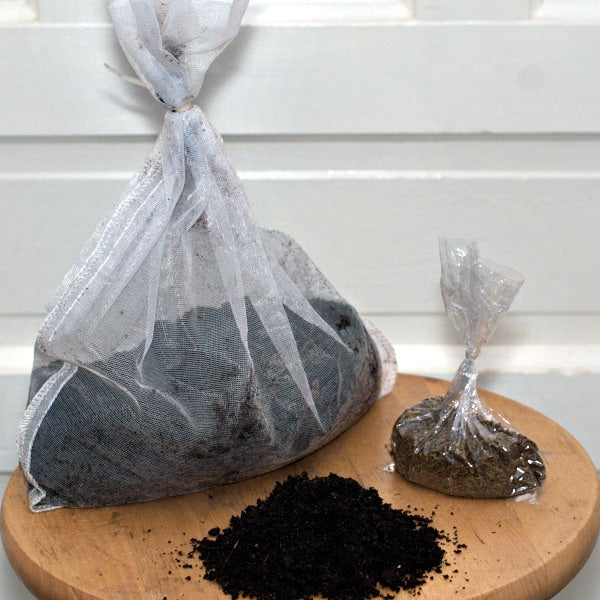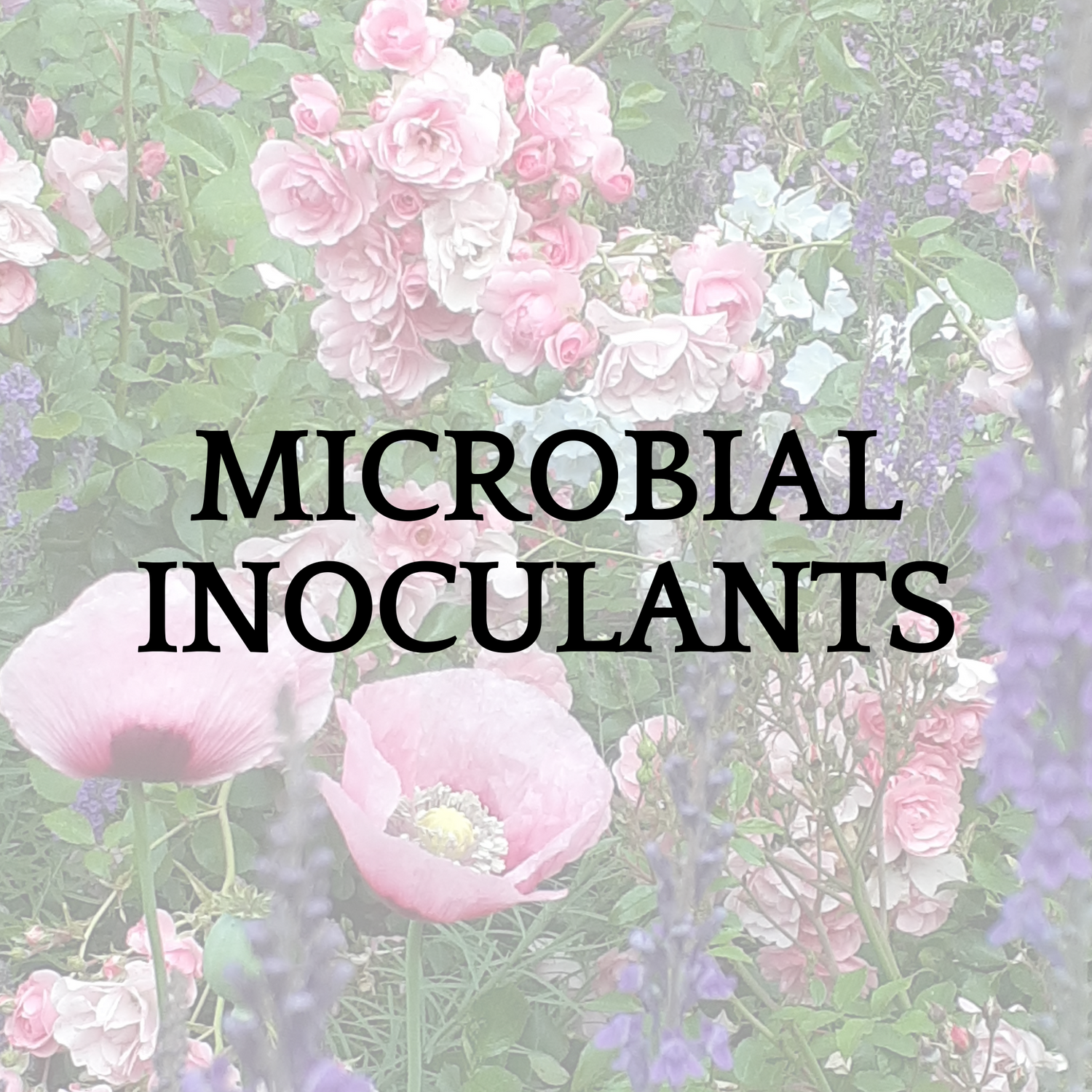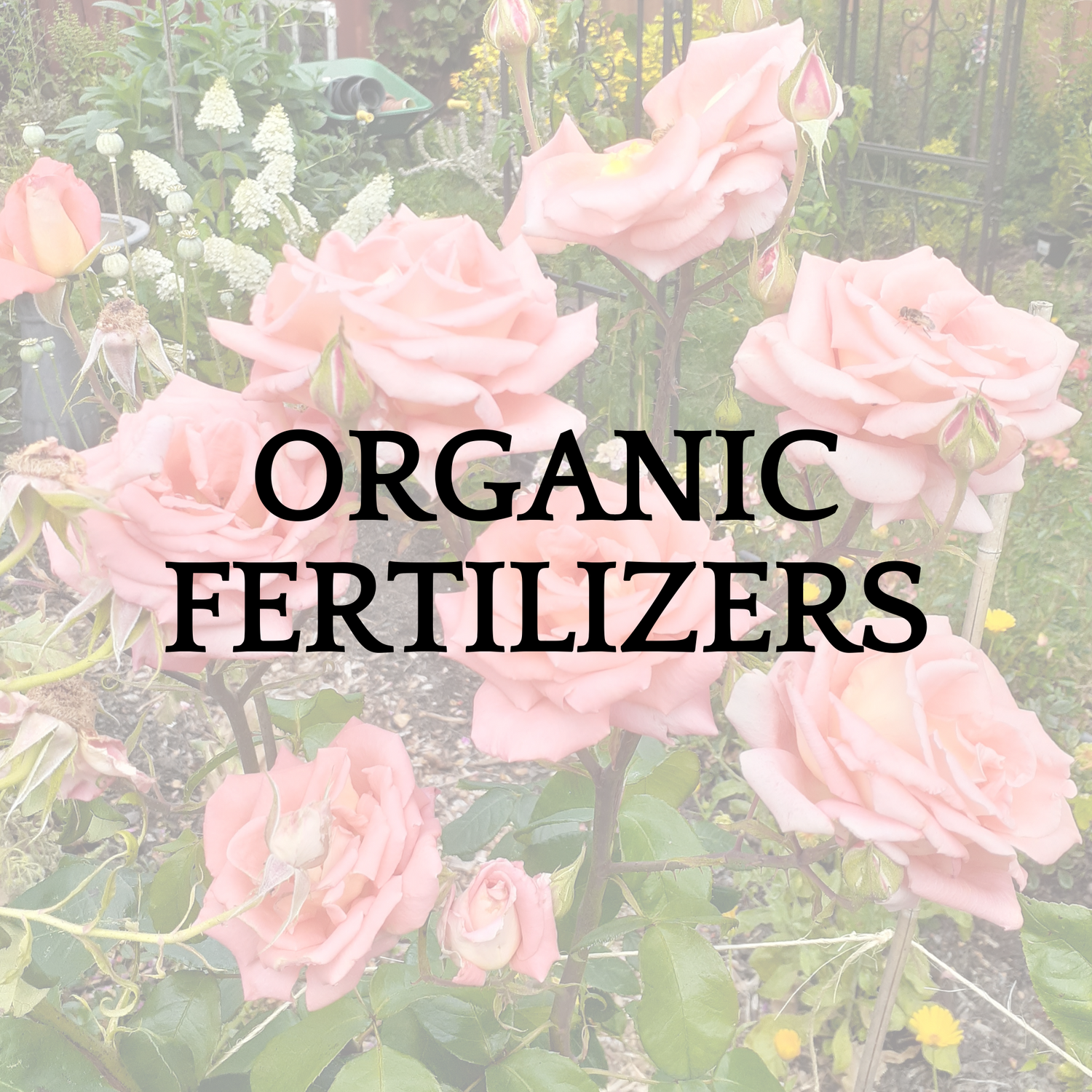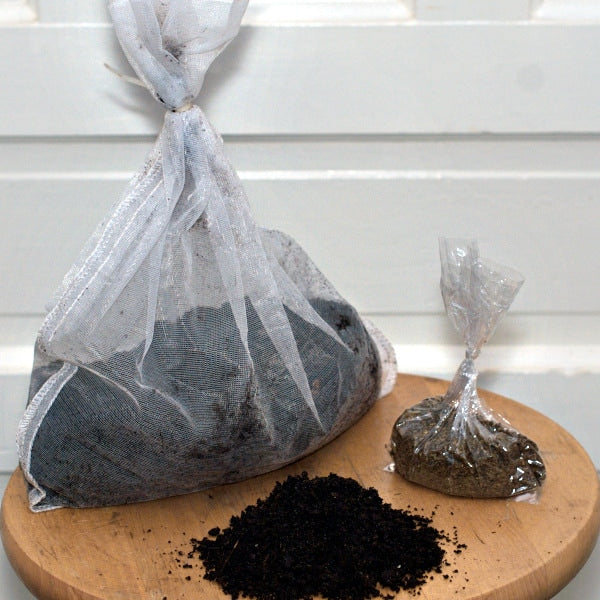Brew Kits
Brew Kits
Couldn't load pickup availability
The compost tea maker comes with one brew kit (with compost in a mesh bag) to get you started. Additional kits, with or without bags, are available.
The high-quality compost (about half-and-half worm compost and garden compost) in this kit is produced locally in Victoria.
Each KIS brew kit contains approximately two large cups of compost and one little plastic bag containing humic acid powder and organic alfalfa meal, for a single 5-gal brew. For extra benefit, you can add 2 tbsp of molasses when starting the brew.
The Mini-Microbulator does not require the compost to be in a mesh bag, in fact it’s recommended to pour the loose compost directly into the water. Other tea brewer models may be optimized for bagged compost. I offer both options in the drop down menu above.
Tip: The mesh bag is useful for filtering the finished tea before pouring it into a sprayer. It can be washed and reused!
Application
Application
Click here for COMPOST TEA APPLICATION
Click here for COMPOST TEA VIDEOS
Share

FAQ
Shipping & Local Pick-Up
FLAT RATE SHIPPING + LOCAL PICK UP
Flat Rate Shipping across Canada with either Canada Post, Purolator or UPS
| Purchase ($) | Shipping ($) |
| <55 | 15 |
| 55-74 | 20 |
| 75-124 | 25 |
| 125-199 | 30 |
| 200-399 | 40 |
| 400-699 | 55 |
| 700+ | 70 |
LOCAL PICK UP, VICTORIA BC
If you prefer to pick up your order in Victoria, BC, just choose the ‘Pick Up’ option during checkout.
Online order pickups are now at Gardener’s Kit at 169 Langford Street — very close to my old shop in Vic West!
You will receive a pick up confirmation when your order is ready. Click Here for driving directions + Gardener's Kit store hours
Ideally, please allow one business day for order processing. If you need something the same day, or you’d like to meet and chat, give me a quick call or send a text before coming over (250-216-3733) and I will try my best to be ready for you.
What’s the difference between EM and Activated EM? Can I keep re-activating my Activated EM?
I wish! Sadly EM is a bit different from yogurt or sourdough making. The first activation will turn out very closely similar to the mother culture, but with subsequent activations the intricate balance of microbe species and numbers will start to shift, and the effectiveness will decrease. I only ever use fresh mother culture when activating.
EM mother culture can be used the same way as Activated EM, but for economic reasons most people buy it to make their own activation. If you’re new to gardening with EM and you just want to try it out, or if you don’t want to spend the time and effort of activating, then go for the already activated product.
What’s the difference between EM/AEM and Compost Tea?
While EM, AEM, and Compost Tea are made differently, they have similar benefits and compliment each other beautifully. For a comparative summary of these products, see the March 2011 Newsletter.
Can I combine products for easy, all-in-one application?
Yes, almost all products are compatible. The only exception is with fish and sea minerals, which are better applied separately. Keep in mind that dilution rates are different for each product, and try to apply right away after mixing.
Do I need a sprayer?
For soil and compost application, or treating small lawns, a watering can is just fine. For application to foliage, finer droplets are advantageous. You can use a spray bottle, a hose-end sprayer, or a hand-held or backpack sprayer. The wand of a sprayer will help greatly with getting to the underside of leaves. Whatever container you use, be sure it never held any pesticides or liquid synthetic fertilizer.
How do I store the products, and how long do they keep?
Store all products at a cool room temperature, with the lid on tight, and out of direct light. Store pure and undiluted – once products are mixed or diluted with water, they go off quickly. EM mother culture keeps up to two years, activated EM six months or longer. Mycorrhizal fungi, liquid fish, liquid kelp, and sea minerals are good for about a year. Humic acids and molasses can be stored almost indefinitely.
more in The Pantry...
-

Microbial Inoculants
Microbial inoculants aren’t organic fertilizers, but bacteria, fungi, and protists play an...
-

Organic Fertilizers
These organic fertilizers could also be called “biostimulants,” i.e. materials that stimulate...




